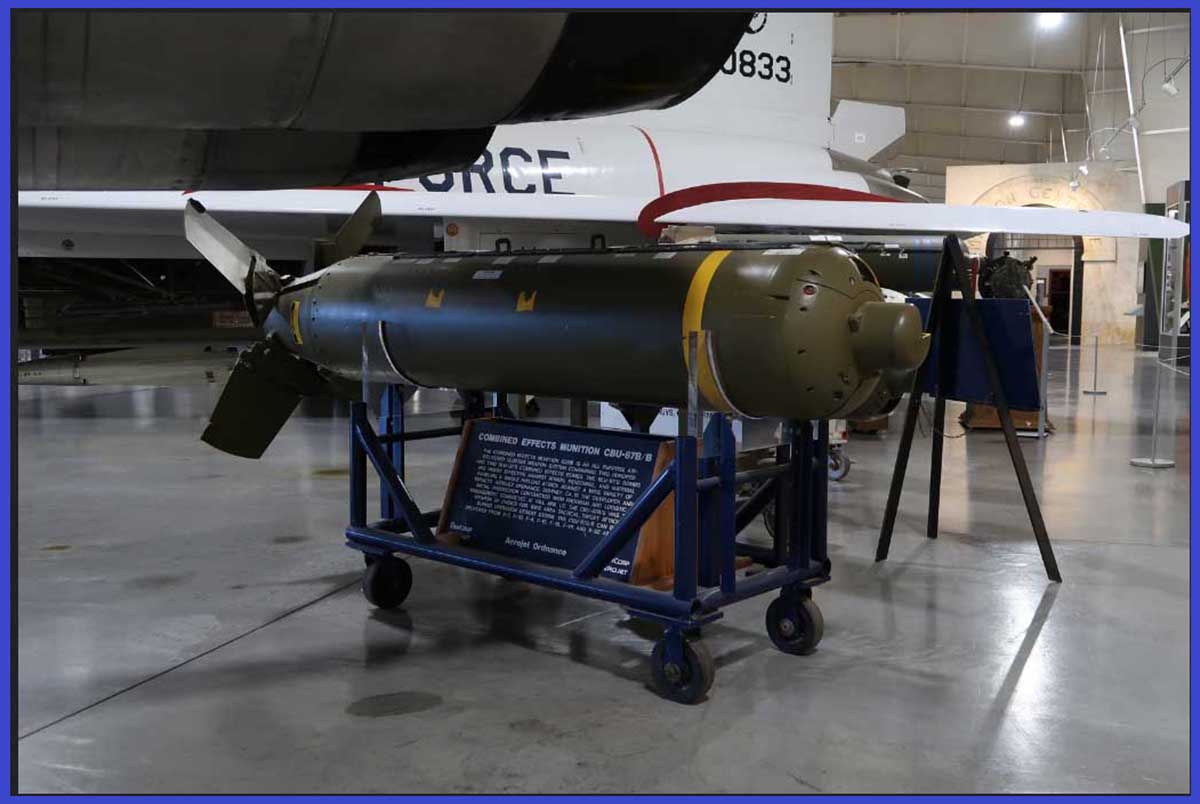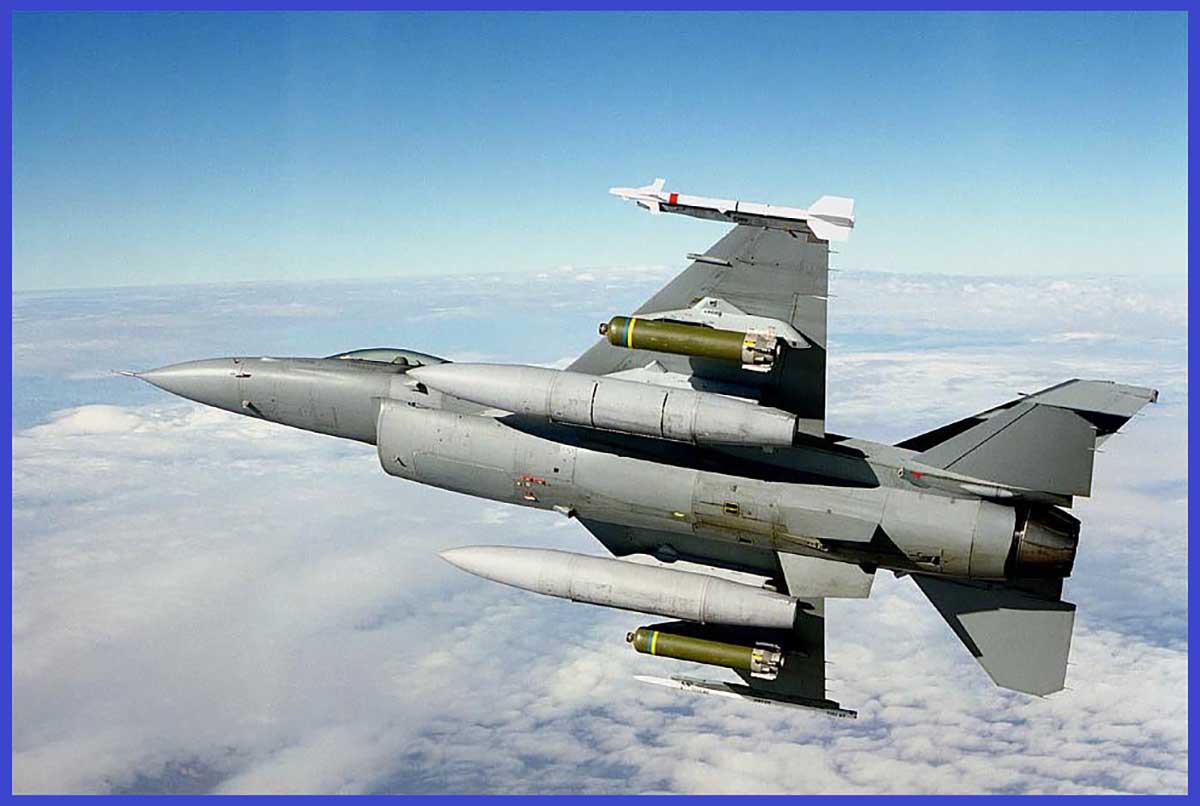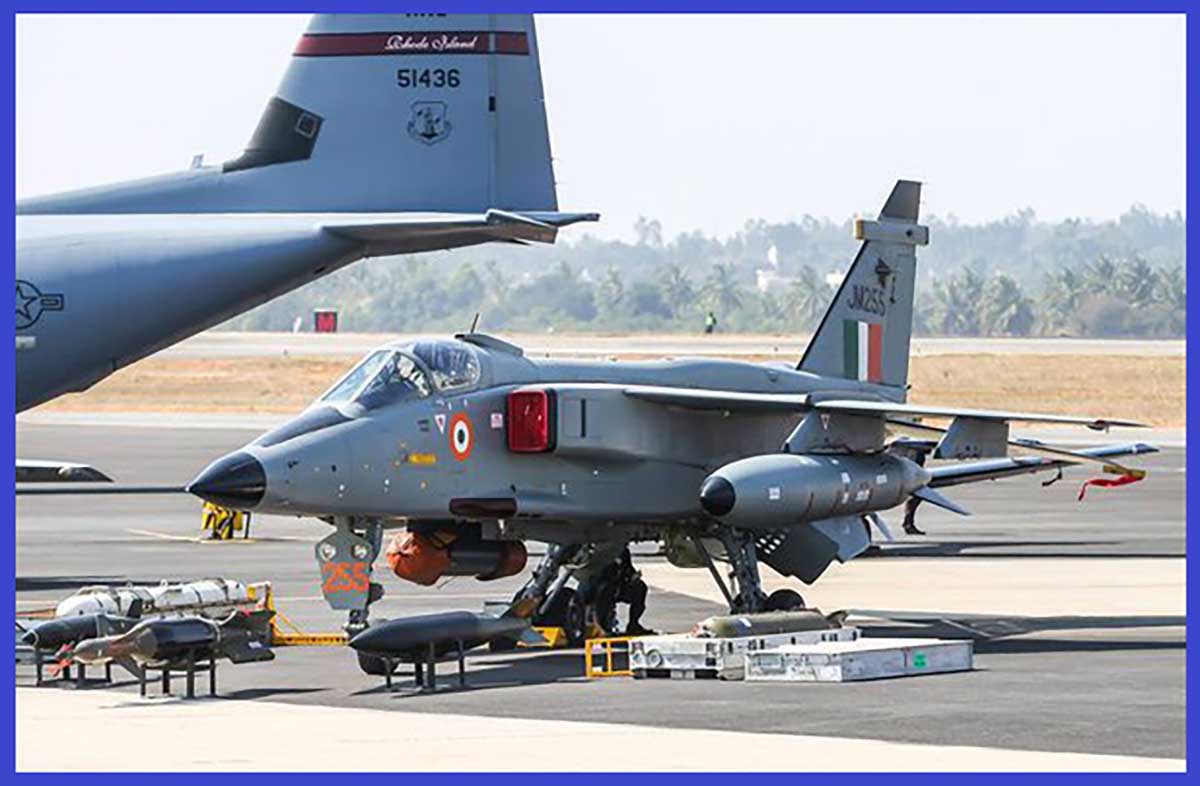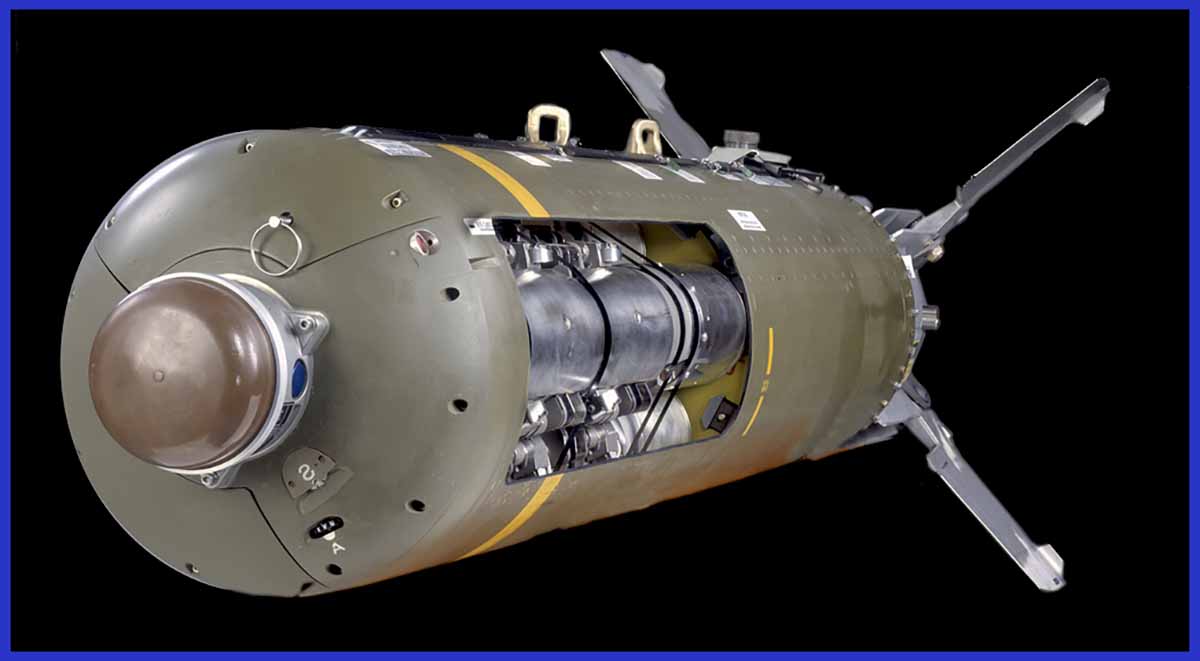A sophisticated air-dropped munition designed for precise targeting in military operations. Know the Best of the CBU-105 Sensor-Fuzed Cluster Bomb It comprises a dispenser that releases 10 BLU-108 submunitions, equipped with advanced sensors. These sensors enable the submunitions to identify and track armoured vehicles on the ground while distinguishing them from non-targets like civilian structures. When a valid target is detected, the submunitions employ self-forging warheads to penetrate the target’s armour, maximizing lethality.
It was developed and produced by Textron Defense Systems. A notable feature of the CBU-105 is its self-destruct mechanism, which activates if submunitions fail to engage a target within a specified time frame. This reduces the risk of unexploded ordnance and potential harm to civilians or friendly forces. While the CBU-105 offers precision strike capabilities against armoured targets with advanced sensors, including infrared and laser detectors, it has also sparked international debate due to concerns about cluster munitions’ humanitarian impact. Some nations have signed agreements to limit or prohibit their use.

Design Analysis of the CBU-105 Sensor-Fuzed Weapon
Payload and Dispensing: The CBU-105 is specifically engineered for the dispersion of multiple smaller submunitions across a wide geographic area, typically accommodating 10 BLU-108 submunitions. These submunitions are deployed from the munition while airborne, spreading out to cover a substantial ground area. Utilizing infrared and laser sensors, the 40 Skeets within the system scan an area measuring 1,500 by 500 feet (460 m × 150 m), employing pattern-matching techniques to identify potential targets. As the CBU-105 approaches its designated target, an explosive cutting charge is activated, severing the dispenser’s skin into three panels.
These panels are subsequently removed by the slipstream, revealing the 10 BLU-108 submunitions. An airbag is deployed to eject the first set of five submunitions, followed by the ejection of the remaining five from the aft bay. In adherence to a predetermined timeline, the submunitions then deploy parachutes, ensuring they are spaced approximately 100 feet (30 m) apart.
Each submunition subsequently releases its chute, initiates a rocket motor to halt its descent, and undergoes a spin along its longitudinal axis, subsequently releasing Skeets in pairs, spaced 90 degrees apart. These spinning Skeets execute a coning motion, enabling them to survey a circular area on the ground. When a Skeet identifies a target, it deploys an explosively-formed penetrator to eliminate it.

Target Identification: The submunitions are programmed to perform target identification and differentiation. They utilize their sensors to conduct ground scans and categorize potential targets into two main groups: armoured vehicles, such as tanks, and non-targets, such as buildings or civilian vehicles. The laser sensor is responsible for detecting changes in apparent terrain height, such as the contours of a vehicle, while the infrared sensors identify heat signatures, such as those emitted by a vehicle’s engine.
When a combination of height contours and heat signatures indicative of a target is detected, the Skeet initiates detonation, launching an explosively-formed penetrator (EFP) at high speed into the target. This EFP is designed to penetrate armour plating and effectively neutralize the target and its protected contents.
Penetration and Lethality: When the BLU-108 submunitions detect a target, they activate a self-forging warhead, specifically engineered to breach the target’s armour and deliver a lethal payload. This significantly enhances the likelihood of mission success. Even heavily armoured vehicles, such as main battle tanks, which possess substantial armour protection on their front and sides, are comparatively less armoured above, making them vulnerable to penetration. Each bomb has the capability to disperse penetrators over an area spanning 15 acres (approximately 61,000 square meters) or more.
Originally designed during the Cold War for fighter bombers operating at low altitudes, below radar coverage, to engage Soviet tanks, a single B-52 high-altitude heavy bomber can now neutralize an entire armoured division using these bombs. In the past, achieving the same effect would have required dozens of aircraft dropping hundreds of bombs.

Self-Destruct Mechanism: To mitigate the potential threat posed by unexploded ordnance to civilians and friendly forces, the CBU-105 submunitions come equipped with a self-destruct mechanism. In the event that a Skeet ( component or submunition within the Sensor-Fuzed Cluster Bomb ) fails to detect a valid target or does not engage a target within a specified timeframe, it automatically initiates self-destruction, occurring at an altitude of 50 feet (approximately 15 meters) above the ground.
Additionally, a backup timer is in place to ensure Skeet deactivation if the primary self-destruct mechanism fails. These features are designed to prevent future civilian casualties resulting from unexploded munitions and result in an unexploded ordnance rate of less than 1%. The CBU-105 version (or the early CBU-97) is deployed by tactical aircraft at altitudes ranging from 200 to 20,000 feet Above Ground Level (AGL) while travelling at speeds between 460 and 1,200 km/h.

CBU-105 Weapon Procurement and Usage
The production of the CBU-105 weapon began in the United States in 1992, and its initial deployment took place during Operation Allied Force when NATO entered the Kosovo War, although it was not used in action at that time. The first combat use of sensor-fused weapons occurred during the 2003 invasion of Iraq. Besides the United States, the CBU-105 has garnered orders from various countries, including India, Oman, Saudi Arabia, South Korea, Turkey, and the United Arab Emirates. In 2010, the U.S. government announced the sale of 512 CBU-105 Sensor Fuzed Weapons to India, intended for use with the SEPECAT Jaguar strike aircraft.
In May 2015, Human Rights Watch published a report that raised concerns and offered criticism regarding the Saudi use of the CBU-105 SFW during the Saudi Arabian-led intervention in Yemen. The United States made its most recent purchase of SFWs in 2007, and production continued for export purposes thereafter. In September 2016, Textron made an announcement indicating the discontinuation of the weapon’s production, citing reasons such as low demand and international controversies surrounding the use of cluster munitions.

Specifications of the CBU-105 Sensor Fuzed Weapon
- Type: Freefall bomb
- Weight: 420 kg ( 927 lb )
- Length: 92 In ( 7.66 ft )
- Diameter: 15.6 In ( 40 cm )
- Dispenser: SW-65 tactical dispenser
- Bomblets: 10 × BLU-108/B
- Warhead: Armour-piercing tactical munitions dispenser
- Fuse: FZU-39/B proximity sensor
- Launch Platform: Bomber _ B-1 Lancer, B-2 Spirit, B-52 Staratofortress / Fighter _ F-15 Eagle, F-16 Fighting Falcon, A-10 Warthog

Furthermore, seize this exclusive opportunity to acquire the exquisite large-scale 1/200 scale metal diecast model of the formidable Boeing B-52H Stratofortress. These remarkable and iconic long-range military bombers boast an impeccable track record and are now available for purchase on AirModels with worldwide delivery. Click here now to secure your piece before the limited stock is depleted.

In Conclusion, the CBU-105 Sensor-Fuzed Weapon is a highly advanced munition designed for precise targeting of armoured vehicles, with features like advanced sensors and self-destruct mechanisms to minimize collateral damage and unexploded ordnance. However, its use remains controversial due to humanitarian concerns associated with cluster munitions. It underscores the ongoing challenge of balancing military effectiveness with humanitarian considerations in modern warfare.
Important Announcement for Our Valued Readers!
After an article is published, it is possible that updates or changes may have occurred beyond the time of publication. Therefore, it is important to be aware that certain information in the article might be outdated. To ensure the most accurate analysis, it is highly recommended to verify the content with the latest sources available.
However, we are dedicated to delivering outstanding articles on military products and global updates. Maintaining quality and smooth operation requires resources. Your support sustains our efforts in providing insightful content. By purchasing high-quality products through our affiliated links, you help us keep our platform alive and acquire top-notch items. Your unwavering support is invaluable and inspires us to strive further.
We welcome your suggestions and requests for more information, as we value feedback from our readers. If there’s specific defence material or equipment not covered on our site, please share your request in the comments. We’ll strive to research and provide the required information. We sincerely thank you for your unwavering interest in our website, and we eagerly anticipate hearing from you! Enjoy your reading experience!
